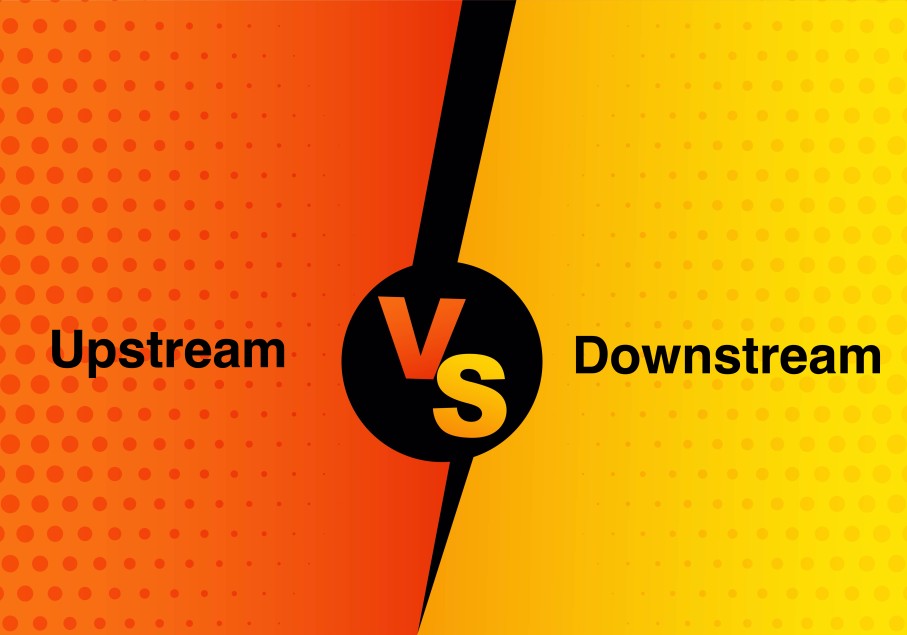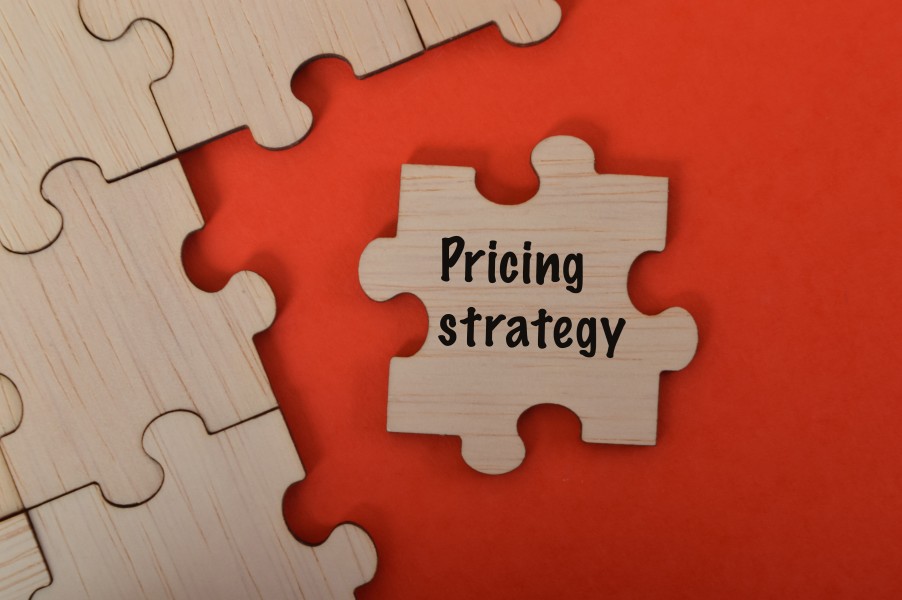In today’s fast-paced world, marketing strategies have become more complex and diverse than ever before. Two main strategies that businesses adopt are upstream and downstream marketing. Upstream marketing focuses on creating brand awareness and building a strong reputation for your business through various channels.
On the other hand, downstream marketing aims to increase sales and revenue by targeting specific customer segments with targeted ads, promotions, and other marketing tactics.
Understanding the differences and benefits of these two strategies is crucial to creating a successful marketing plan. In this article, we will dive deeper into upstream and downstream marketing strategies and discuss how they can help you navigate the ever-changing marketing currents.
So, let’s get started!
Introduction To Upstream and Downstream Marketing
Both upstream and downstream activities are important for the success of a business. This group of marketing is vital for the smooth working of the marketing and sales teams. However, the approach and tactics used for each strategy are different. Upstream marketing is focused on building a strong foundation for your business, while downstream marketing is focused on driving revenue and sales.
Upstream Marketing
Upstream marketing is a relatively new concept in the world of marketing that focuses on identifying the needs and preferences of customers and creating products or services that meet those needs.
Unlike traditional marketing methods that focus on promoting existing products or services, this marketing stream takes proactive and innovative thinking by placing the customer at the center of the product development process. This allows companies to create products that customers want and need, thereby increasing customer satisfaction and loyalty.
The upstream marketing strategy typically begins with extensive market research to identify customer needs as well as market trends and preferences. This information is then used to create a product or service that meets those needs and is differentiated from competitors.
The goal is to promote future marketing and create a product that is not only desirable but also sustainable over the long term by building strong relationships with customers based on mutual trust and respect.
Downstream Marketing
Downstream marketing refers to the process of marketing products and services to end consumers, after they have been produced and packaged. This involves the distribution, promotion, and sale of products through various channels such as retailers, wholesalers, and e-commerce platforms.
Downstream marketing is a crucial aspect of any business as it determines the success of a product in the market and gives the framework for the overall marketing strategy. It involves understanding customer needs, preferences, and behaviors to develop effective marketing strategies that maximize sales and profitability.
The downstream marketing activities begin with identifying the target audience for the product. This involves conducting market research focused on short-term sales campaigns to understand the needs, desires, and preferences of potential customers.
Once the target audience has been identified, the next step is to develop a marketing strategy that is tailored to their needs. This may involve the sales team creating promotional materials such as advertisements, brochures, and social media platforms that highlight the benefits and features of the product.
Wondering whether upstream or downstream marketing is the right approach to success?
Contact Growth Hackers
Benefits Of Upstream Marketing
Upstream marketing has several benefits for businesses. Firstly, it helps to create brand awareness and build a strong reputation for your business. This is important because customers are more likely to choose a brand that they recognize and trust.
Upstream marketing also helps to establish your business as an industry leader by providing valuable information and insights to your target audience. This tactic in turn attracts new customers while ensuring to retain existing ones.
One of the key advantages of the upstream marketing process is that it allows companies to better anticipate changes in the market and respond quickly to new trends and customer demands.
By taking a proactive approach to product development, companies can stay ahead of the curve and avoid being caught off guard by sudden shifts in customer preferences or market conditions. This can help them maintain a competitive advantage and achieve long-term success.
Another benefit of the upstream marketing plan is that it is often less expensive than downstream marketing. This is because upstream marketing focuses on creating demand for your products or services, rather than targeting specific customer segments. This means that you can reach a larger audience with less investment.
Upstream marketing considers building stronger customer relationships by creating products or services that meet their specific needs and preferences. This can lead to increased customer satisfaction, loyalty, and advocacy, which can be incredibly valuable in today’s hyper-competitive marketplace.
By focusing on creating products that truly meet the needs of customers, companies can build a loyal customer base that will stick with them through thick and thin.
Advantages Of Downstream Marketing
Downstream marketing creates several advantages for businesses. Firstly, it is focused on driving revenue and sales, which is important for the success of any business. By targeting specific customer segments with targeted ads, promotions, and email marketing, you can increase your chances of converting potential customers into paying customers.
Another advantage of downstream marketing is that it is highly measurable. By tracking metrics such as conversion rates, click-through rates, and cost per acquisition, you can determine the effectiveness of your marketing campaigns and make data-driven decisions about where to invest your marketing budget.
Finally, downstream marketing can help to increase customer loyalty and retention by providing personalized experiences to your customers. By targeting specific customer segments with relevant offers and promotions, you can create a sense of exclusivity and build stronger relationships with your customers over time.
Upstream Vs Downstream Marketing: Pricing
Pricing is an important aspect of both upstream and downstream marketing.
In upstream marketing, pricing plays a crucial role in creating demand for the product or service. The price of the product should be such that it creates a perception of value among the target audience. If the price is too high, it may deter potential customers from buying the product. On the other hand, if the price is too low, it may create a perception of low quality among customers. Therefore, companies need to conduct thorough market research to understand the pricing expectations of their target audience and design a pricing strategy accordingly.
In downstream marketing, pricing plays an equally important role in ensuring customer satisfaction. Customers expect to receive value for their money, and pricing is one of the key factors that determine their satisfaction with a product or service. Companies need to ensure that the pricing is transparent and that customers are aware of the cost they will incur before making a purchase. Hidden costs or unexpected charges can lead to customer dissatisfaction and negative reviews.
Another aspect of downstream pricing is pricing strategies such as discounts, promotions, and bundling. These strategies can be used to incentivize customers to buy more or to create loyalty among existing customers. For example, offering a discount on bulk purchases can encourage customers to buy more, while offering exclusive promotions to loyal customers can make them feel valued and encourage repeat purchases.
Upstream Vs Downstream Marketing: Implementation
The implementation of upstream vs downstream marketing can have a significant impact on the success of a marketing campaign.
Upstream ideas deal with the investment of time and resources. However, it can pay off in the long run by creating a product that is tailored to consumer needs. By understanding consumer preferences and trends, companies can create products that stand out in a crowded marketplace and generate buzz among target customers.
The implementation of downstream marketing is often more immediate than upstream marketing. Companies can launch advertising campaigns and sales promotions relatively quickly once the product is ready for market.
It’s also important to track metrics such as conversion rates, click-through rates, and cost per acquisition to determine the effectiveness of your marketing campaigns. However, downstream marketing may not be as effective as upstream marketing in creating long-term customer loyalty.
Measuring the Success of Upstream and Downstream Marketing
Measuring the success of upstream and downstream marketing requires tracking several metrics. For upstream marketing, metrics such as website traffic, social media engagement, and brand mentions can be used to determine the effectiveness of your marketing campaigns. For downstream marketing, metrics such as conversion rates, click-through rates, and cost per acquisition can be used to determine the effectiveness of your marketing campaigns.
Sales and marketing teams conduct research focused on long-term trends thereby providing security to a certain extent. It’s also important to track customer loyalty and retention over time to determine the long-term impact of your marketing campaigns. This can be done through customer surveys, customer reviews, and other feedback mechanisms.
Both upstream and downstream tactics together can help companies to achieve their business goals more effectively. The upstream working can merge with the downstream marketing strategy process.
By combining these strategies, companies can create a comprehensive marketing plan that addresses all aspects of their business, from product development to sales and promotion. This can lead to increased revenue, customer loyalty, and overall success in the marketplace.
Achieve marketing success with the perfect blend of upstream and downstream strategies today!
Examples of Upstream and Downstream Marketing Strategies
There are several examples of upstream and downstream marketing strategies that businesses can use to achieve their goals. Upstream marketing strategies include content marketing, social media channels, international public relations, and influencer marketing.
For example, a business might create valuable content that provides insights and information to its target audience, or it might partner with an influencer to promote its brand to a wider audience.
Downstream marketing strategies include targeted ads, promotions, email marketing, and customer loyalty programs. For example, a business might target specific customer segments with personalized ads and promotions, or they might create a loyalty program to reward their most loyal customers.
How to Choose the Right Marketing Strategy for your Business
Choosing the right marketing strategy for your business depends on several factors, such as your goals, budget, and target audience. If you are a new business or trying to establish your brand, the upstream process might be a better option. On the other hand, if you are an established business looking to increase revenue and sales, downstream marketing might be a better option.
It’s also important to consider your target audience when choosing a marketing strategy. If your target audience is highly engaged on social media, for example, then social media marketing might be a good option. If your target audience is more traditional, then public relations or email marketing might be a better option.
Final Thoughts on Upstream Vs Downstream Marketing
In conclusion, upstream and downstream marketing are two distinct marketing strategies that businesses can use to achieve their goals. Upstream marketing is focused on creating brand awareness and building a strong reputation, while downstream marketing is focused on increasing revenue and sales.
Choosing the right marketing strategy for your business depends on several factors, such as your goals, budget, and target audience. By understanding the differences and benefits of upstream and downstream marketing, you can create a successful marketing plan that helps you navigate the ever-changing marketing currents.
And speaking of marketing, if you ever need some professional help with boosting your business’s online presence, Growth Hackers is the partner you didn’t know you needed.
As a business owner, you undoubtedly want to increase your sales, generate more leads, and see a positive return on investment (ROI) in your marketing efforts. At Growth Hackers, we can help you achieve these goals and more.
Our team of experts uses a data-driven and result-driven approach to digital marketing, analyzing every aspect of your business and identifying areas for improvement. We don’t just hope for success, we work tirelessly to ensure that your business experiences sustainable growth over time. With our proven track record of success and commitment to excellence, we’re confident that we can help your business reach its full potential.
Reach out to us today and we will get you started in growing your business sustainably right away.







